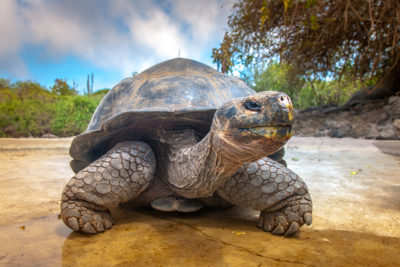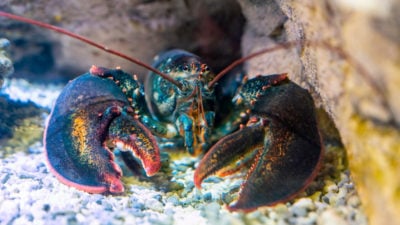“Could Humans become immortal?” is something we get asked quite often, and the answer depends on what you mean exactly.
When it comes to immortality, what you mean is important
Whether human immortality is possible greatly depends on how you define it. If you define it as living forever and being unkillable like in a comic book or movie, then, no, it is highly unlikely.
However, if you define it in terms of showing no decline in survival characteristics, no increase in disease incidence, and no increase in mortality with advancing age, then yes.
To some people this may seem to be a matter of semantics, but it is not. The first is a science-fiction fantasy; the second is based on real-world biology that evolution has already selected for in certain species. This is known as negligible senescence. And in fact, some animals are already doing exactly this!
And the good news is that there is no reason why humans could not enjoy considerably increased healthy longevity if the appropriate technologies are developed. It isn’t even beyond the realms of possibility that humans might achieve negligible senescence thanks to the march of medical science and technology.
Senescence and negligible senescence
Senescence refers to the gradual deterioration of aging and is typically very obvious in almost every species. More accurately, senescence refers to a decline of survival characteristics, such as strength, mobility, and senses, and age-related increases in mortality along with a decrease in reproductive capability. Mortality rates for humans and most animals increase dramatically with age beyond reaching reproductive maturity.
A few species are more unusual and exhibit negligible senescence. An organism is considered negligibly senescent if it does not show any loss of survival characteristics, such as strength, mobility, and senses, an increased mortality rate with advancing age, or a loss of reproductive capability with age.
| Species | Recorded lifespan |
| Rougheye rockfish | 205 years[1-2] |
| Aldabra Giant Tortoise | 255 years |
| Lobsters | 100+ years (Presumed NS) |
| Naked mole rat (Heterocephalus glaberis) | 28 years |
| Sea anemones | 60–80 years |
| Freshwater pearl mussel | 210–250 years[3] |
| Ocean Quahog clam | 507 years[4] |
| Greenland Shark | 400 years |
| Lake sturgeon (Acipenser fulvescens) | 152 years (Presumed NS) |
| Clams such as Panopea generosa | 160 years (Presumed NS) |
Negligible senescence does not mean they cannot die
It is worth noting that even though these species enjoy negligible senescence and do not age or age immeasurably slowly, they are still vulnerable to predation, accidents, starvation, environmental dangers, changes to their environmental niches, and diseases. This means that extremely old examples of these species with negligible senescence are very rare, especially in the wild.

To further complicate matters, we often need to sacrifice the animal in order to measure its age by examining the deep tissues and marks inside bones, much like measuring rings in a tree trunk.
This means that we cannot know the maximum age that might be achieved by these species, so the above numbers are based on what information we have; there could well be considerably older examples out there. The point here is that negligible species with senescence do not deteriorate with age and may live considerably longer than has been recorded.
Possibly even more intriguing is the hydra, a species that is observed to have no lifespan limit, as it regenerates very quickly. Barring predation and changes to its environment, it is one of the few species for which the phrase “biological immortality” would be appropriate [5]. The hydra is quite unique in how its cells work, and it is quite unlike the majority of other organisms on the planet; it is a true oddball but fascinating all the same.
Strategies for engineered negligible senescence

Well this is great news if you happen to be a lobster and avoid the fisherman’s pot long enough to reach a ripe old age, but what about us; how can we benefit from the same advantages that negligibly senescent species do?
It is clear that we would have to wait a long time, perhaps forever, before evolution selected the same traits in humans, so something a little more direct is needed.
Some scientists, such as Dr. Aubrey de Grey, propose that we can engineer negligible senescence by using a repair-based approach to the damage that aging causes. This is the basis of SENS, the strategies for engineered negligible senescence, and is being pursued by the SENS Research Foundation.
Other researchers have built on the original concept of SENS, and in 2013, the Hallmarks of aging was published. This landmark paper broke the aging process down into nine distinct processes known as hallmarks and essentially gave researchers a way to classify aging and an insight into what processes they might target to slow down or even reverse aging.
While there are quite a number of aging theories, the Hallmarks of aging appears to be the most popular, judging by how many times it has been cited and how often it is used in academia. Essentially, the Hallmarks of aging has given researchers a list of targets to develop therapies for and now the race is on to create them.
Should negligible senescence be achieved in humans through SENS or other approaches such as partial cellular reprogramming, it would potentially mean the end of age-related diseases and ill health, a most worthy goal indeed.
The inevitability of multicellular aging
Back in 2017, a great deal of fuss was made about humans achieving negligible senescence, with a number of articles suggesting that it is impossible. The reason is that the popular media has interpreted this paper very badly, assuming that the authors imply that because aging is inevitable, we cannot do anything about it [6].
The media was been filled with articles almost smugly proclaiming in some cases that aging is unstoppable and mathematically impossible to defeat. The problem with this interpretation is that it is just plain wrong. The original paper is, strictly speaking, correct in that aging damage is indeed inevitable, but it makes no assumptions about interventions. The publication says a great deal about what evolution has done and is likely to do based on observation, but that says absolutely nothing about what medicine may achieve in the future.
One cannot apply such thinking when it comes to engineering negligible senescence in humans through the periodic repair of age-related damage. So, quite simply, publications like this make little difference to work in this field, and they change the plausibility of us achieving negligible senescence in no way whatsoever.
No, aging is not inevitable
A more recent example in 2021, which was again met with almost gleeful declaration by the press that aging cannot be stopped, was the ‘invariant rate of ageing’ paper [7]. Unfortunately, once again the reporting was based on the a similar misunderstanding of what the study actually said.
The study was actually not a study about longevity or that aging was inevitable. It was trying to understand what influences the rate of aging across species and how much results from evolved biological processes versus the effects of the environment. While the research itself has obvious merit scientifically speaking, the popular press chose to represent it in a different light.
The irony is that instead of showing that aging is indeed inevitable, the research instead shows that eventually humanity will run out of ways in which environmental improvements will increase our lifespans. At that point further gains will only be achieved through medical interventions that address the aging processes directly and either repair the damage aging does, or slow aging down by make us more resilient.
What if humans were immortal?
Imagine the possibilities that would come with living forever! You could spend more time with loved ones, master a variety of careers, and travel the entire world! If everyone on Earth were immortal, we’d all have a chance to recover from our mistakes, and our society could save a ton of money on healthcare
Conclusion
There is a clear difference between Hollywood-style immortality and negligible senescence, with the latter being a plausible goal in the next few decades. Evolution has already demonstrated that negligible senescence is indeed possible; now, the next big challenge is to use an engineering approach to aging to see if we can emulate in people what nature has done in a few lucky species. The good news is, we have a list of targets and a far better understanding of what aging is than we did even 10 years ago, and there is a lot more interest in tackling aging from both the academic and investment communities.
If you enjoyed this, you may also like our recent video about the Marvel film. the Eternals. We explore if humans could live as long and age slowly as the Eternals for real.
Literature
[1] Munk, K. M. (2001). Maximum ages of groundfishes in waters off Alaska and British Columbia and considerations of age determination. Alaska Fish. Res. Bull, 8(1), 12-21.
[2] Cailliet, G. M., Andrews, A. H., Burton, E. J., Watters, D. L., Kline, D. E., & Ferry-Graham, L. A. (2001). Age determination and validation studies of marine fishes: do deep-dwellers live longer?. Experimental gerontology, 36(4), 739-764.
[3] Ziuganov, V., Miguel, E. S., Neves, R. J., Longa, A., Fernández, C., Amaro, R., … & Johnson, T. (2000). Life span variation of the freshwater pearl shell: a model species for testing longevity mechanisms in animals. AMBIO: A Journal of the Human Environment, 29(2), 102-105.
[4] Munro, D., & Blier, P. U. (2012). The extreme longevity of Arctica islandica is associated with increased peroxidation resistance in mitochondrial membranes. Aging cell, 11(5), 845-855.
[5] Martı́nez, D. E. (1998). Mortality patterns suggest lack of senescence in hydra. Experimental gerontology, 33(3), 217-225.
[6] Nelson, P., & Masel, J. (2017). Intercellular competition and the inevitability of multicellular aging. Proceedings of the National Academy of Sciences, 201618854.
[7] Colchero, F. et al. The long lives of primates and the ‘invariant rate of ageing’ hypothesis. Nature Communications (2021), doi: 10.1038/s41467-021-23894-3
View the article at lifespan.io










































